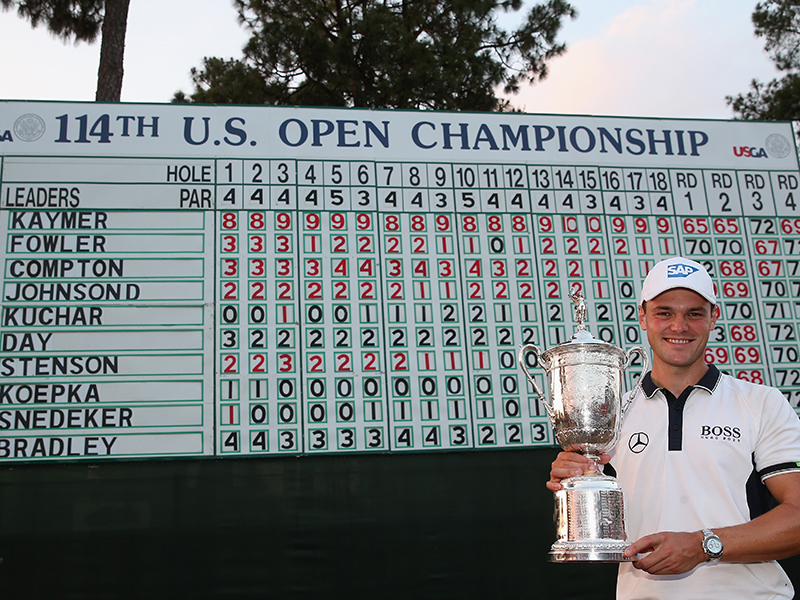
Pinehurst No.2 is already proving to be a bit of a brute, and so it should be! US Open golf, and Majors in general, should be fiendishly hard and players should have to work for the right to hoist the trophy on Sunday.
The PGA Championship was won by Xander Schauffele at a quite frankly embarrassing score of 21-under-par, making it the lowest score ever in Major Championship history.
A combination of course conditions and set-up allowed Schauffele to shatter low scoring and course records, making a mockery of what these tournaments are supposed to represent.
In order to become a Major champion you should not only have to beat your fellow competitors, but also overcome the course, and Pinehurst No.2 could just be a worthy foe...
Why The US Open (And All Majors) Should Be Hard...
So far this season, 19 of the 25 PGA Tour events (excluding the Zurich Classic) have been won at a score of 15-under-par or better. Nine of those have actually surpassed 20-under-par, with two reaching the dizzy heights of 29-under-par.
The signature events have also followed a similar pattern, with six out of seven so far this season being won at 15-under-par or better. The Players Championship, the flagship event on the PGA Tour, hosted on an iconic golf course at TPC Sawgrass, saw Scheffler snatch victory at 20-under-par, further amplifying the lack of diversity in the levels of challenge.
I am not saying there isn't a place for 'birdie-fest' golf, but the regularity in which we see it risks making the sport dull. Last week's set-up at the Memorial Tournament created just enough jeopardy on Sunday to make it interesting, and actually my favourite event of the season so far to watch.
At the very least, the four events each year that comprise the men's Majors should be the true tests in our sport – requiring players to scrap, scramble and battle for par.

An important caveat to that point is around The Masters, which is unlikely to ever be a tournament where par is a good score again, but we love it all the same as it has identity. The US Open also has an identity... that it's ruthlessly hard.
Pinehurst No.2 has already promised to meet that standard. Social media clips and interviews with players have suggested that the tricky 'turtleback' greens, sharp run-off areas and unpredictable landscape could create the perfect conditions for a true slog in the sun.
But, why is it important that we see that? In adversity and challenge, we witness a lot about a players true skill level, temperament, strategy and creativity, rather than the same weekly process of throwing darts at flags and having 10ft for birdie.
The jeopardy on approach at a lot of tour venues is nullified by thick rough around the greens, which most elite players are capable enough to navigate with relative ease. The shaved run-off areas and slick greens at Pinehurst No.2 will insist that players get creative in their shot-making, using a variety of clubs throughout their bag to manufacture a little magic.

Its length also doesn't necessarily play into the hands of the 'bombers' off the tee, with strategy playing a crucial part in determining the right angle to approach the green. While distance will be important this week, I'd be surprised to see anyone pulling driver on every tee box – again adding another tactical dimension to proceedings.
Clearly there is a balance to find in ensuring the difficulty doesn't cross that borderline between resistant and ridiculous, as nobody wants to see controversies where the best players in the world are reduced to apparent hackers. Pinehurst No.2 has a great record of meeting that brief, with the winning scores from its first two times hosting the event coming it one-under par (1999) and even par (2005).
Martin Kaymer dared to rebel against it in 2014, shooting by comparison an alarmingly high nine-under-par, but when you consider the joint runner-ups finished on one-under-par, you can perhaps forgive that blemish as a one-off demonstration of genius from the German.

The US Open, and in turn the USGA, perhaps have the best record of setting up tough Major tests, with three of the last four winners of this event doing so at single figures under par.
While you might hear one or two (but likely many more) players complaining this week, I certainly won't be. As a regular golf viewer, I want to see a blend of different types of golf course, a variety of challenge and opportunities for an array of different winners, but I believe the stiffest tests should be reserved for weeks just like this.
Some will claim that the test is 'unfair', but seeing as the challenge is the same for every player I find it hard to agree with that sentiment. Variation is good for the game of golf, and while I know there will be people who disagree with my position, I will be furious if I see the leaders score rising anywhere near the absurdity of the previous Major championship.







